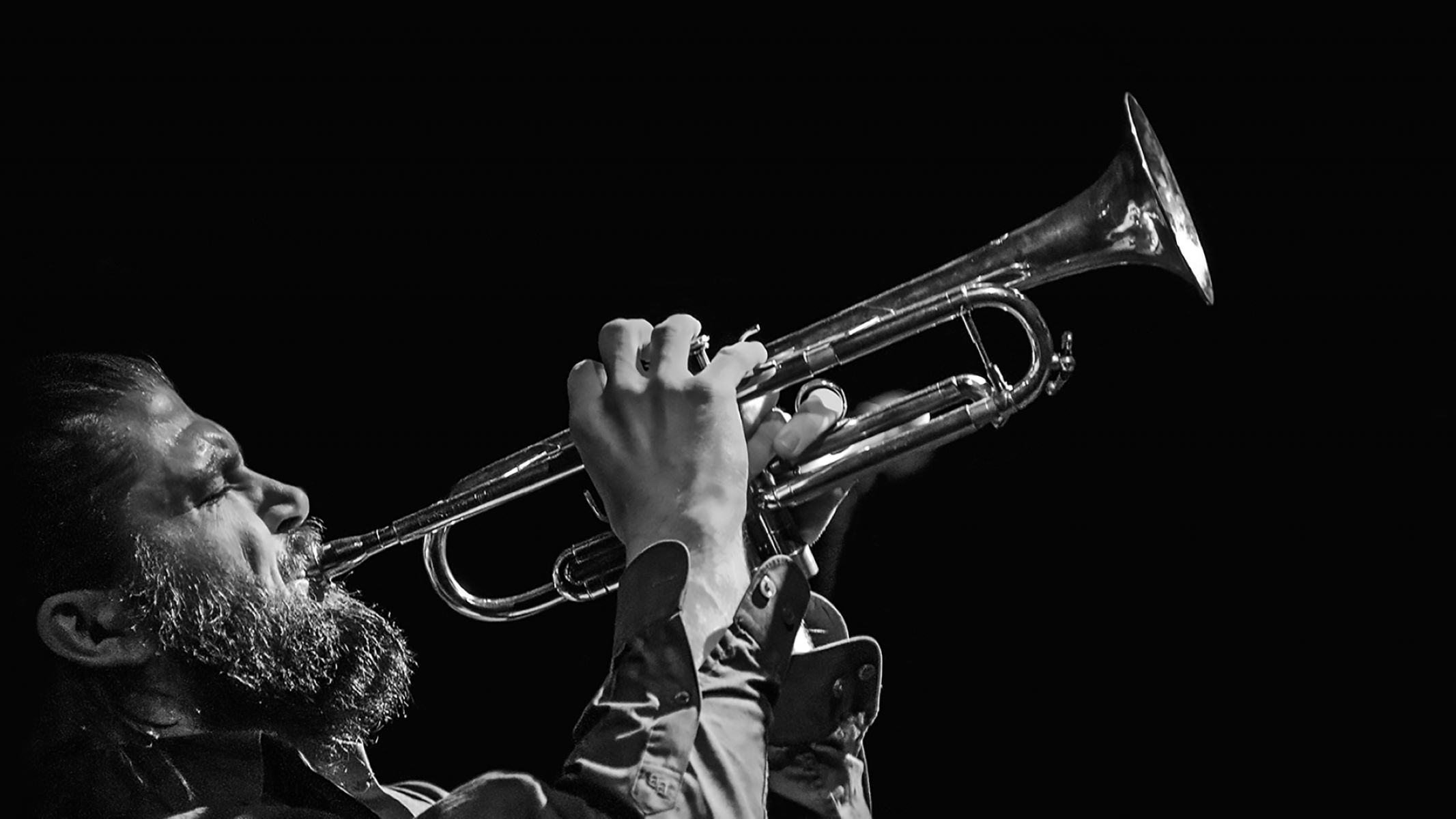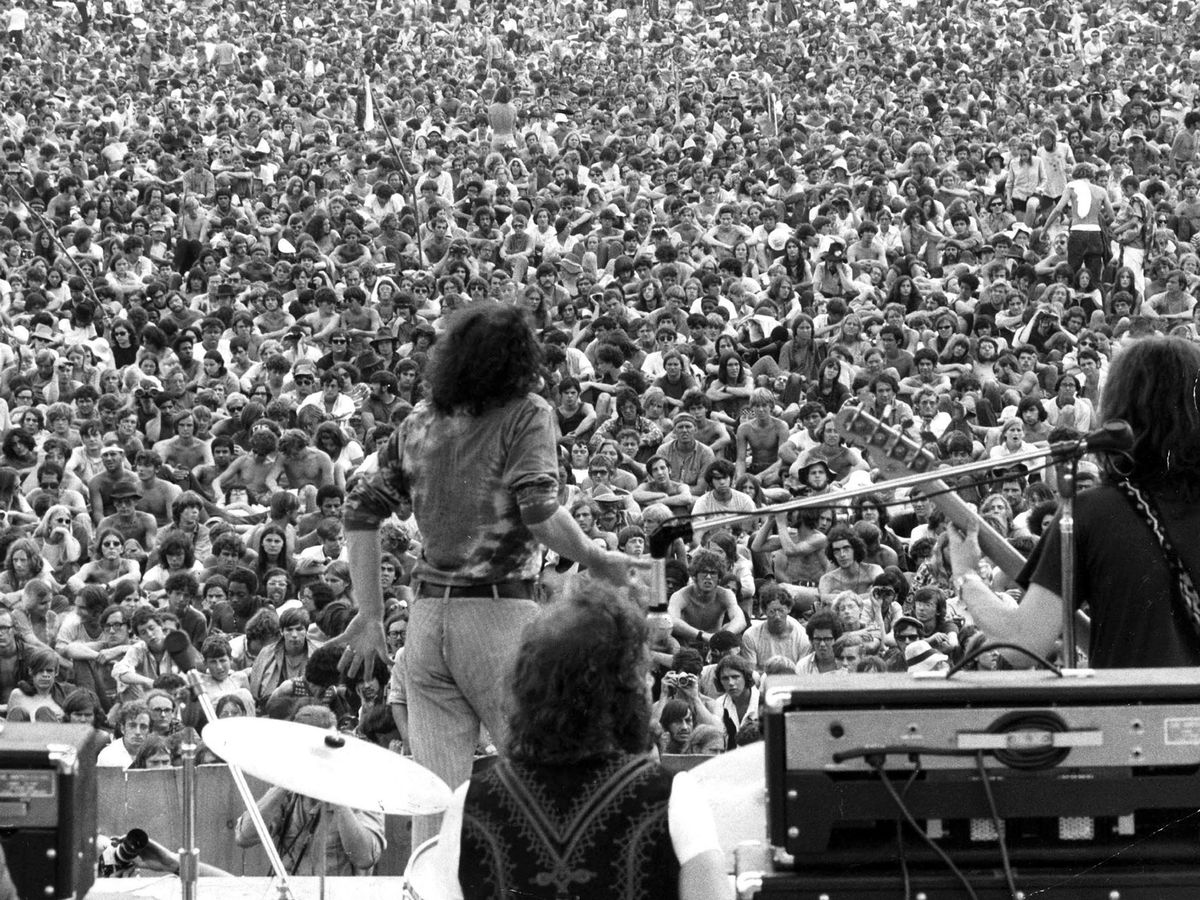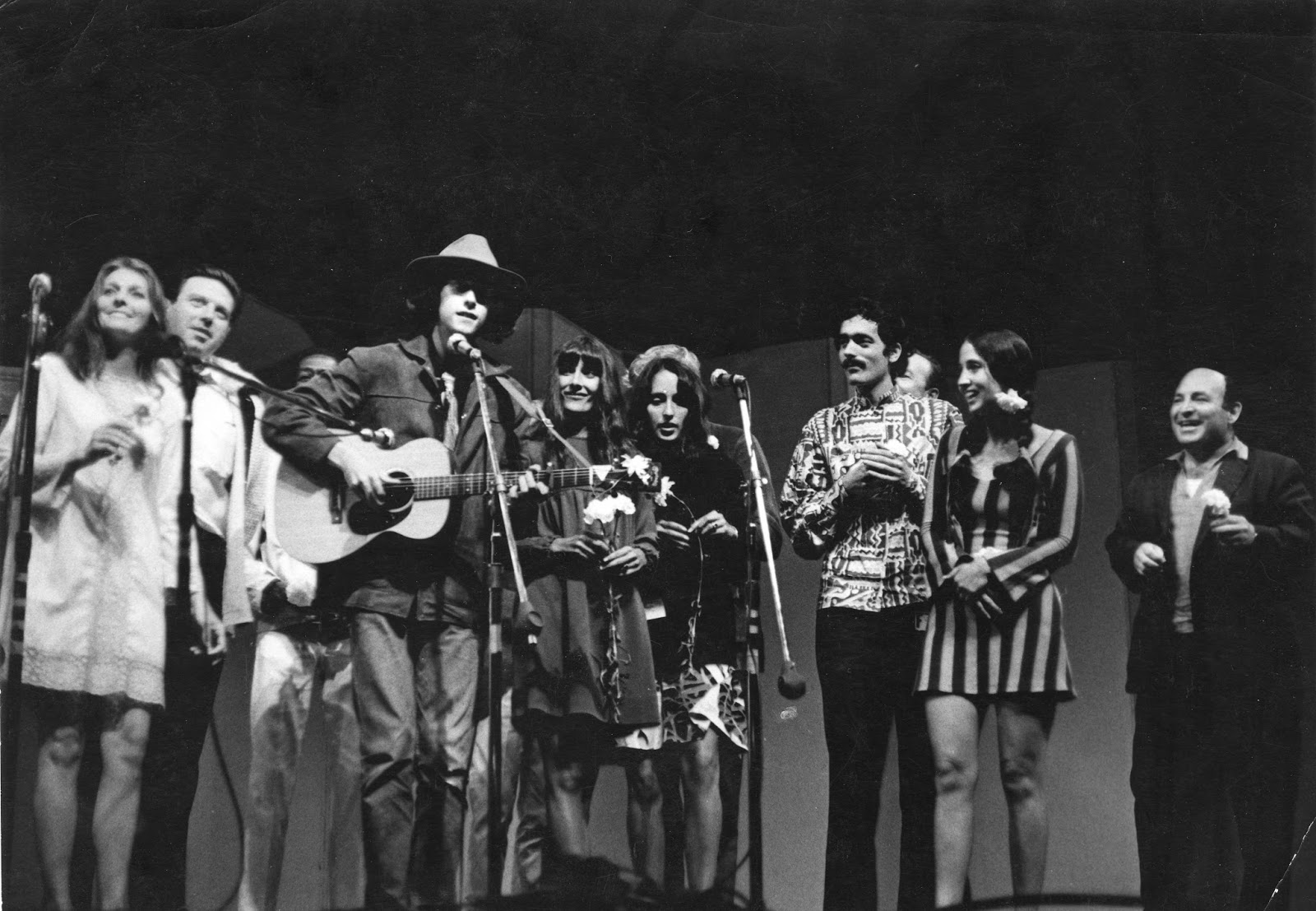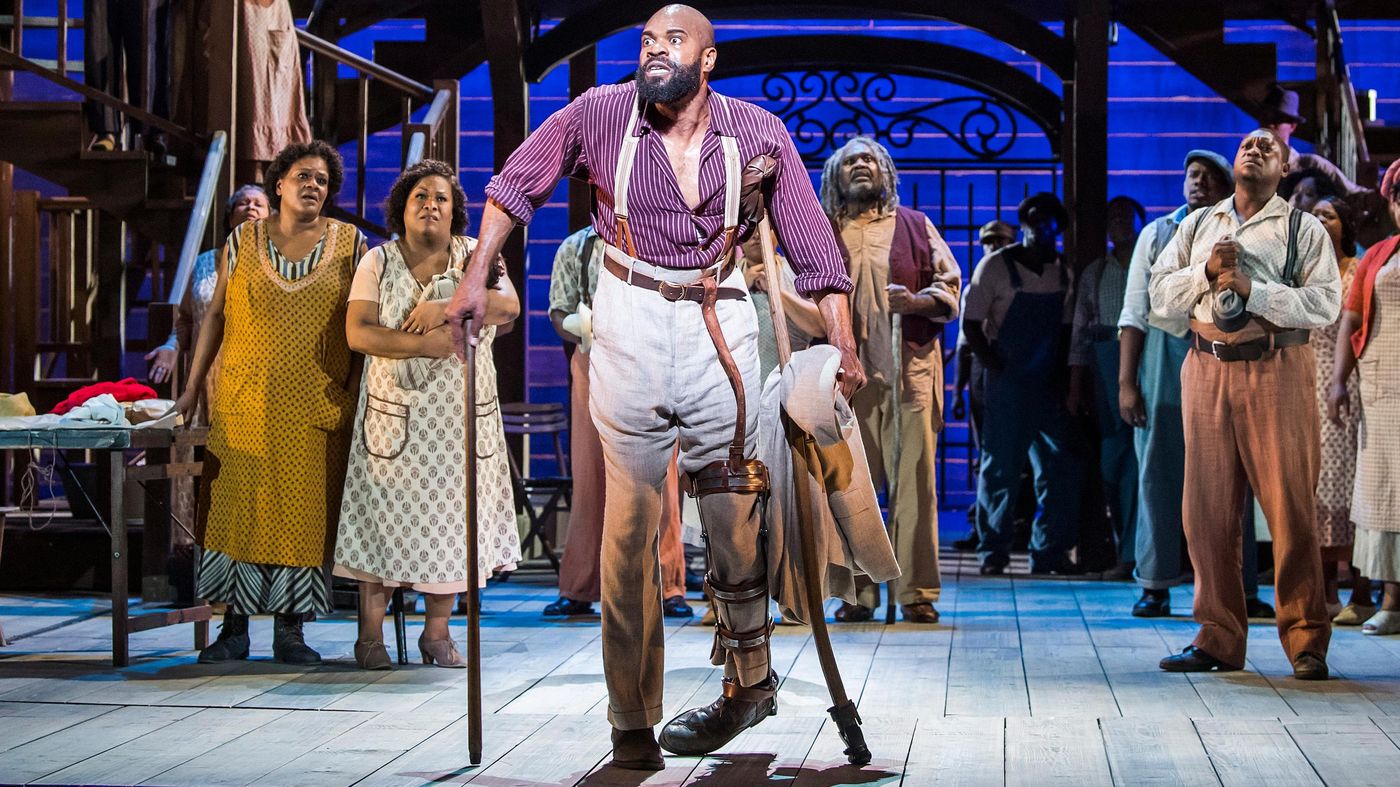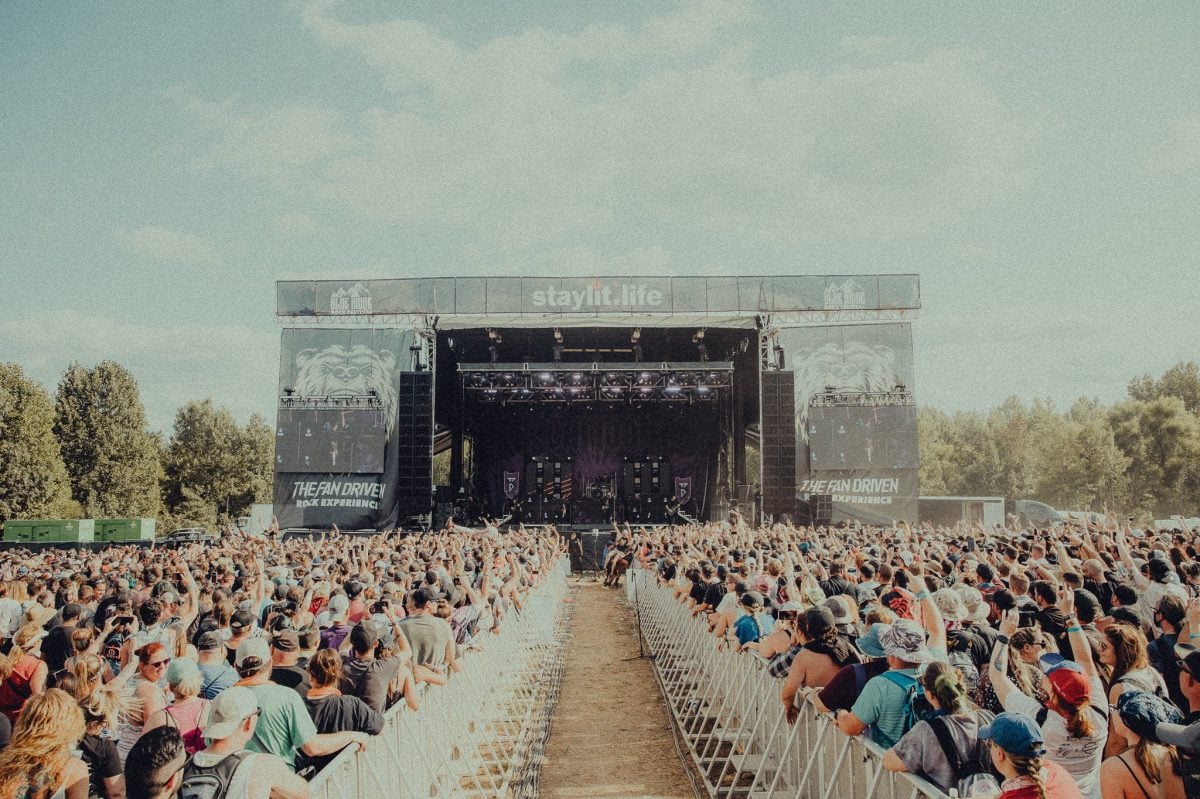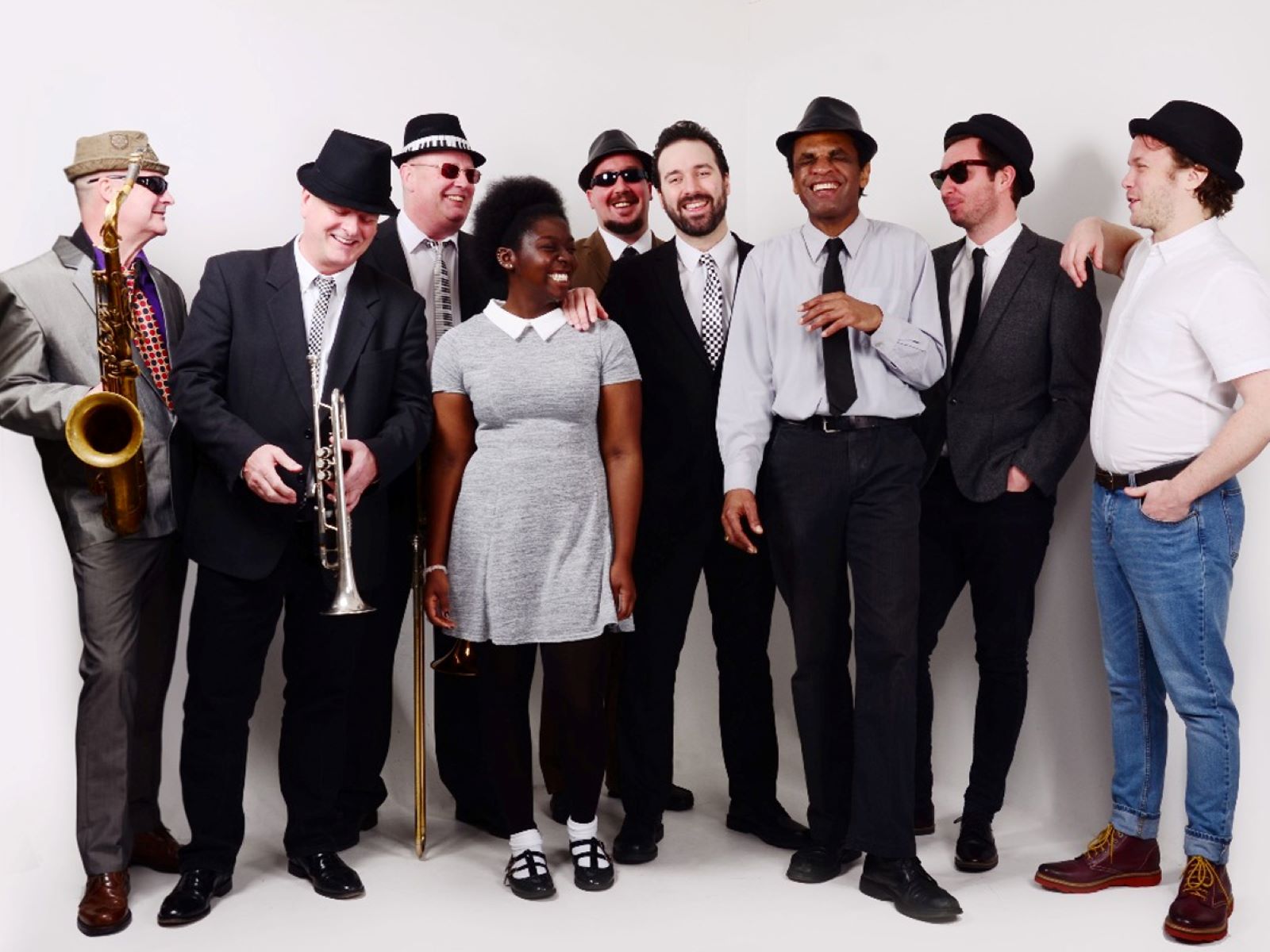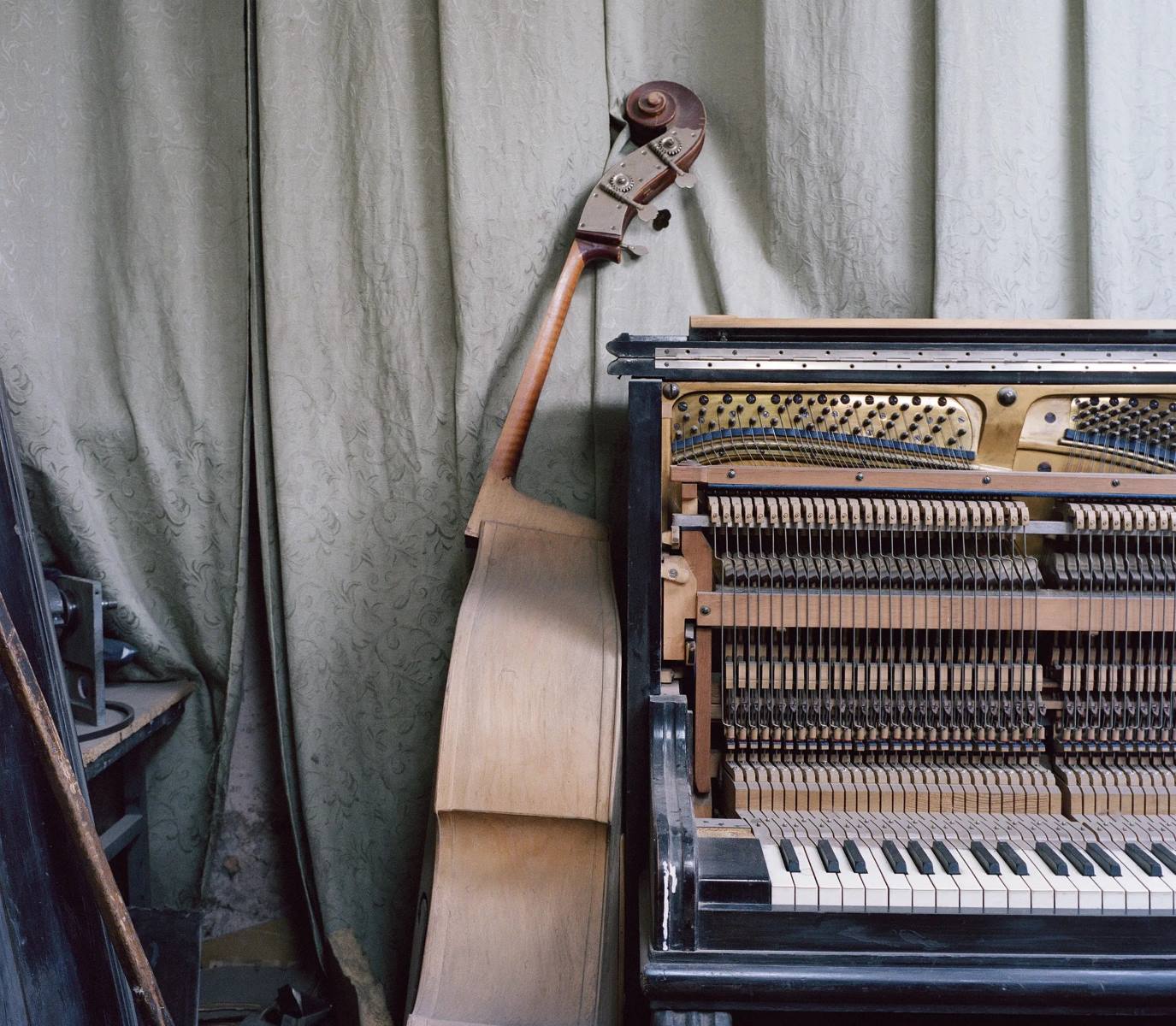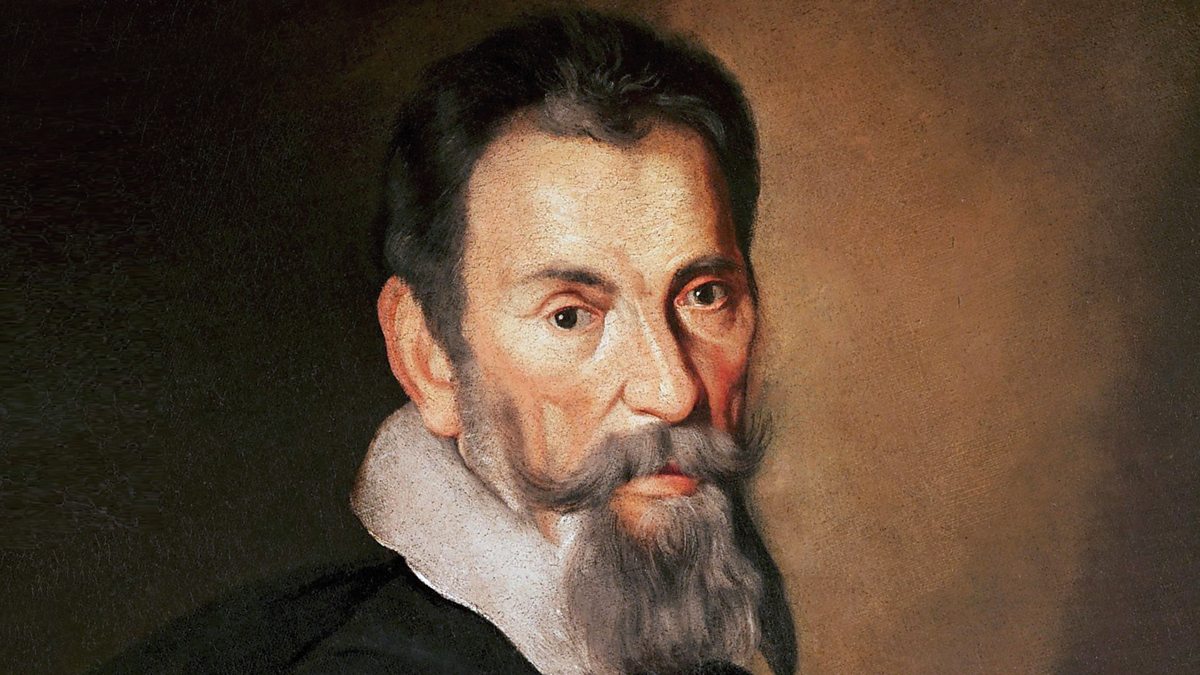Home>Genres>Rock>Which Is Considered To Be The First Rock Music Festival?


Rock
Which Is Considered To Be The First Rock Music Festival?
Modified: March 5, 2024
Discover the origins of rock music festivals and find out which one is considered to be the first. Explore the rich history of rock music and its iconic events.
(Many of the links in this article redirect to a specific reviewed product. Your purchase of these products through affiliate links helps to generate commission for AudioLover.com, at no extra cost. Learn more)
Table of Contents
Introduction
Rock music has been an integral part of popular culture for decades, with its electrifying sound, rebellious attitude, and energetic performances capturing the hearts of millions of fans worldwide. One of the most memorable aspects of the rock music scene has been the legendary music festivals that have defined eras, bringing together iconic musicians and enthusiastic crowds in celebration of the genre.
But which music festival can truly claim the title of being the first rock music festival? With so many influential events throughout history, it can be challenging to pinpoint the exact origins of this cultural phenomenon. In this article, we will explore the early history of rock music festivals and highlight three key contenders for the title of first rock music festival: the Monterey Pop Festival, Woodstock Music and Art Fair, and the Isle of Wight Festival.
These festivals not only provided a platform for artists to showcase their talent, but they also played a pivotal role in shaping the culture and identity of rock music. From the birth of counterculture movements to iconic performances that defined generations, these events have become legendary in their own right.
Join us on a journey through the history of rock music festivals as we explore the key contenders and their significance in shaping the rock music landscape. Strap yourself in, because we’re about to embark on a wild ride through time, music, and the spirit of rebellion!
Early History of Rock Music Festivals
The concept of music festivals dates back centuries, with various cultures and civilizations hosting gatherings centered around music and celebration. However, it was in the 1960s when the idea of rock music festivals truly took off, fueled by the rise of the counterculture movement and the increasing popularity of rock and roll.
During this time, young people yearned for an escape from the constraints of society, seeking liberation and creative expression. Rock music, with its rebellious spirit and powerful messages, became the perfect soundtrack for this cultural shift.
The early rock music festivals were characterized by a sense of community, unity, and a shared love for music. Fans gathered in large numbers, often camping out for days, to immerse themselves in the music and experience the vibrant atmosphere of these events.
These festivals became a haven for musicians to showcase their talent and connect with their audience on a deeper level. The performances were often accompanied by experimental light shows, art installations, and a wide array of vendors selling everything from handmade crafts to mind-altering substances.
As these festivals began to gain momentum, the demand for larger venues and infrastructure grew. Organizers faced challenges in finding suitable locations and managing the logistics of hosting thousands of attendees. However, despite these obstacles, the rock music festival culture continued to evolve and thrive.
It’s important to note that while the notion of rock music festivals emerged in the 1960s, the term “rock” itself was still a broad and evolving genre. The music played at these festivals encompassed a wide range of sub-genres, including psychedelic rock, folk rock, blues rock, and more.
With the stage set for the birth of rock music festivals, it was only a matter of time before these events skyrocketed in popularity, forever changing the music industry and leaving a lasting legacy.
The Key Contenders for the First Rock Music Festival
When it comes to determining the first rock music festival, there are several key contenders that have left an indelible mark on music history. While it’s difficult to pinpoint one definitive event, three festivals stand out as significant contenders: the Monterey Pop Festival, Woodstock Music and Art Fair, and the Isle of Wight Festival. Let’s take a closer look at each of them.
1. Monterey Pop Festival: Held in June 1967, the Monterey Pop Festival is often regarded as the inaugural rock music festival. Organized by Lou Adler, John Phillips of The Mamas & The Papas, and music producer Alan Pariser, it showcased an impressive lineup of iconic acts, including The Who, Janis Joplin, Jimi Hendrix, and Otis Redding. The festival signaled a turning point in the music industry, with its diverse mix of genres and groundbreaking performances. It set the stage for future festivals and brought the counterculture movement into the mainstream consciousness.
2. Woodstock Music and Art Fair: Undeniably one of the most iconic and influential festivals of all time, the Woodstock Music and Art Fair took place in August 1969. Located in Bethel, New York, this legendary event attracted an estimated 400,000 attendees and became synonymous with the spirit of peace, love, and music. With a lineup featuring legendary acts like Jimi Hendrix, Janis Joplin, Santana, and The Who, Woodstock became a cultural touchstone and a symbol of the counterculture movement of the 1960s.
3. Isle of Wight Festival: While often overshadowed by Monterey Pop and Woodstock, the Isle of Wight Festival held in the late 1960s and early 1970s deserves recognition as a significant contender for the first rock music festival. With its picturesque location on the Isle of Wight in England, the festival attracted massive crowds and featured notable performances by artists like Bob Dylan, The Doors, and The Who. The festival played a crucial role in shaping the music scene in the UK and further solidifying the legacy of rock music festivals worldwide.
While these three festivals are often seen as the frontrunners in the race for the title of the first rock music festival, it’s important to remember that the history of rock music festivals is complex and nuanced. Numerous other events and gatherings contributed to the development of this cultural phenomenon, with each playing a unique role in shaping the legacy of rock music festivals as we know them today.
Monterey Pop Festival
The Monterey Pop Festival, held in June 1967 in Monterey, California, is often hailed as a groundbreaking event that paved the way for future rock music festivals. As one of the key contenders for the title of the first rock music festival, Monterey Pop left an indelible mark on both the music industry and the counterculture movement of the 1960s.
Organized by Lou Adler, John Phillips of The Mamas & The Papas, and music producer Alan Pariser, the festival aimed to bring together a diverse range of musical genres and promote unity through music. The organizers succeeded in curating a lineup that included legendary acts such as The Who, Janis Joplin, Jimi Hendrix, Otis Redding, and Jefferson Airplane.
The festival unfolded over three days, drawing an estimated crowd of around 200,000 attendees. It was a transformative experience that blurred the lines between performers and audience, as musicians and fans shared in the collective celebration of music and counterculture ideals.
The performances at Monterey Pop were nothing short of electrifying. Jimi Hendrix’s mesmerizing guitar solos, Janis Joplin’s soulful and raw vocals, and The Who’s explosive stage presence captivated the audience and showcased the immense talent of these artists.
One of the most memorable moments of the festival was when Jimi Hendrix closed his set by setting his guitar on fire. This iconic act of musical expression and rebellion became an enduring symbol of the festival’s spirit, leaving an indelible mark on both the attendees and the wider music world.
Beyond the music, Monterey Pop also showcased the vibrant counterculture movement of the era. The festival embraced the ideals of peace, love, and social activism, and provided a platform for artists to express their political and social views through their music.
Monterey Pop served as a catalyst for the mainstream acceptance of rock music and the counterculture movement. It set the stage for the Woodstock Music and Art Fair, which would follow two years later and become the epitome of the rock music festival experience.
With its diverse lineup, groundbreaking performances, and cultural impact, the Monterey Pop Festival remains a defining moment in rock music history. It transcended the boundaries of a typical music festival, becoming a symbol of unity, artistic expression, and the spirit of the 1960s.
Woodstock Music and Art Fair
The Woodstock Music and Art Fair, held in August 1969, is undoubtedly one of the most revered and iconic music festivals in history. Located in Bethel, New York, Woodstock attracted an estimated 400,000 attendees and became a cultural touchstone that defined an entire generation.
With its lineup featuring legendary acts like Jimi Hendrix, Janis Joplin, Santana, The Who, and many more, Woodstock showcased the best of rock music at the time. The festival embraced the spirit of peace, love, and counterculture ideals that defined the 1960s, resonating with the anti-war movement and promoting a sense of unity among the attendees.
Woodstock stood out not only for its incredible musical performances but also for its unique and unprecedented scale. The organizers faced numerous challenges in managing such a massive event, including unexpected rainfall, logistical issues, and a shortage of basic necessities like food and water. However, these hardships only served to strengthen the sense of community and camaraderie among the attendees.
The festival itself became a symbol of the counterculture movement, embodying the desire for societal change and the pursuit of peace and harmony. It provided a space where like-minded individuals could come together, escaping the pressures of society and celebrating music in all its forms.
Woodstock also left a lasting impact on the music industry and popular culture. Iconic performances such as Jimi Hendrix’s rendition of “The Star-Spangled Banner” and Joe Cocker’s soulful rendition of “With a Little Help from My Friends” became legendary moments in rock music history.
Beyond the music, Woodstock showcased the power of collective action and the potential for large-scale gatherings to effect change. The festival achieved a remarkable level of organization and cooperation among attendees, demonstrating that peace and harmony were possible even in the face of adversity.
Woodstock was more than just a music festival; it became a symbol of a generation’s spirit and a testament to the enduring power of music to unite people. It remains an inspiration for subsequent rock music festivals, continuing to influence the way we celebrate and embrace the diversity of rock music.
The legacy of Woodstock lives on, reminding us of the power of music to transcend boundaries and redefine cultural norms. As we look back on the event, we are reminded of the importance of unity, peace, and the enduring spirit of rock and roll.
Isle of Wight Festival
The Isle of Wight Festival, held on the Isle of Wight in England, emerged as a significant contender in the realm of rock music festivals during the late 1960s and early 1970s. While often overlooked in comparison to Monterey Pop and Woodstock, the Isle of Wight Festival played a pivotal role in shaping the music scene in the UK and further contributed to the legacy of rock music festivals worldwide.
The festival first gained widespread attention with its 1969 edition, which attracted an estimated 150,000 attendees. The lineup featured an impressive array of artists, including Bob Dylan, The Doors, The Who, Joe Cocker, and many more. Despite facing logistical challenges and resistance from local authorities, the festival successfully created an electrifying atmosphere that captivated the audience.
In 1970, the Isle of Wight Festival reached a peak attendance of approximately 600,000 people, making it one of the largest music events of its time. The monumental lineup included performances by legendary artists such as Jimi Hendrix, The Doors, Joni Mitchell, and Emerson, Lake & Palmer.
The significance of the Isle of Wight Festival lies not only in its impressive artist roster but also in the cultural impact it had on the UK and beyond. The festival reflected the countercultural movement that was sweeping through society, embodying the spirit of rebellion and creative expression.
At the Isle of Wight Festival, music became a medium through which individuals could voice their social and political concerns. The event provided a platform for artists to use their music as a form of protest, expressing messages of peace, love, and societal change.
Like other rock music festivals of the era, the Isle of Wight Festival celebrated not only the music itself but also the communal aspect of the event. Attendees camped out on the island, fostering a sense of community and camaraderie among the festival-goers. This sense of unity and shared experience added to the festival’s reputation as a transformative event.
While the Isle of Wight Festival experienced some challenges and controversies throughout its history, it remains an important chapter in the story of rock music festivals. Its impact on the music scene in the UK, as well as its contributions to the broader counterculture movement, are undeniable.
The spirit of the Isle of Wight Festival lives on in the hearts of music lovers and continues to inspire subsequent generations of festival-goers. Its legacy serves as a testament to the enduring power of music to create connections, foster social change, and shape the cultural landscape.
Conclusion
The history of rock music festivals is a captivating tale of music, rebellion, and cultural transformation. While it is challenging to determine which festival can truly claim the title of the first rock music festival, we have explored three key contenders that have left an indelible mark on the music industry and popular culture: the Monterey Pop Festival, Woodstock Music and Art Fair, and the Isle of Wight Festival.
These festivals epitomized the spirit of their respective eras and played a crucial role in shaping the trajectory of rock music. From Monterey Pop’s groundbreaking performances and cultural impact to Woodstock’s unprecedented scale and embodiment of counterculture ideals, and the Isle of Wight Festival’s influence on the UK music scene, each festival holds a unique place in history.
These events brought together diverse artists and passionate music fans, creating communities and moments of musical transcendence. They were platforms for artists to express themselves creatively and convey messages of social and political significance, leaving a lasting legacy that continues to resonate with audiences today.
Rock music festivals have evolved and proliferated in the subsequent decades, with festivals like Glastonbury, Coachella, and Bonnaroo becoming iconic celebrations of music and culture. They continue to provide a space for artists to showcase their talent and connect with fans, fostering a sense of unity and celebration.
As we reflect on the history of rock music festivals, we are reminded of the power of music to inspire, unite, and provoke change. These festivals have not only entertained audiences but also acted as catalysts for social movements, shaping the cultural fabric of their time.
Whether it was the sights and sounds of Monterey Pop, the counter-cultural revolution of Woodstock, or the emergence of the UK music scene at the Isle of Wight Festival, these events have left an indelible mark on music and popular culture.
So, the next time you find yourself at a rock music festival, take a moment to appreciate the rich history and legacy that surrounds you. Embrace the spirit of unity and creative expression that has defined these events throughout the years, and let the music transport you to a place of pure joy and shared experience.


